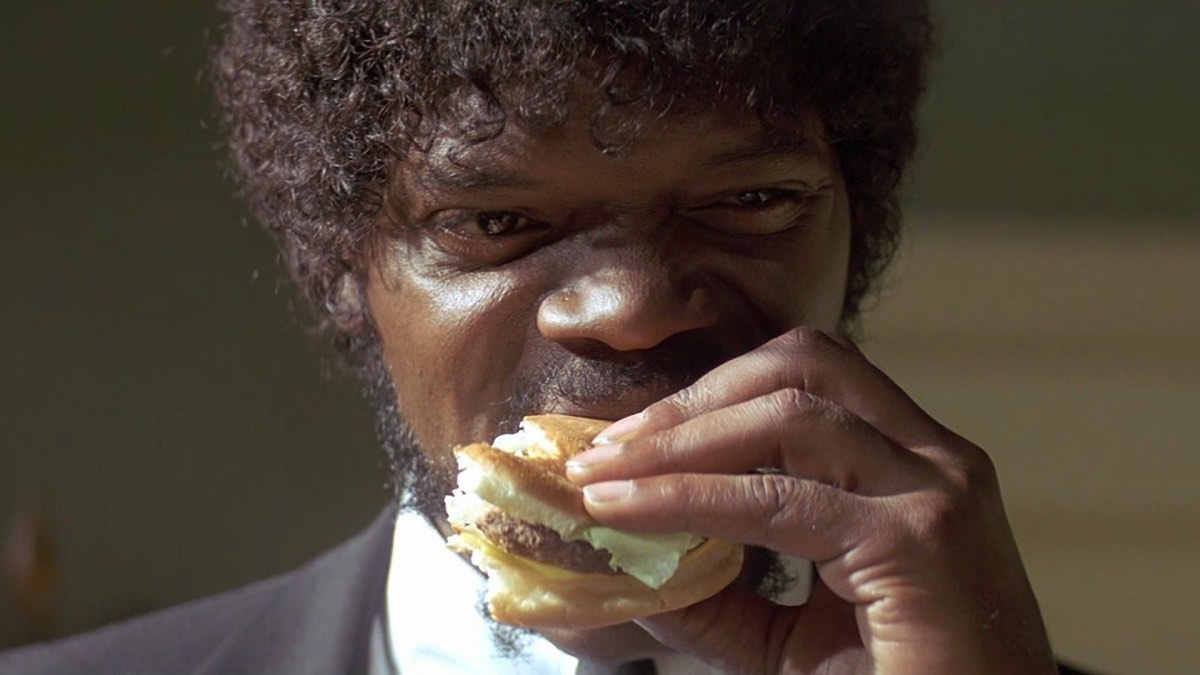Written by R. A. Raga
Click here to read the Spanish version.
As a daring few say, of all the entrepreneurial species in the world, there are only two sectors in which risk-taking is the norm: film and drugs. When they think they have exhausted their model, they reinvent themselves. In adversity or in love – legally or illegally – they are convinced of the saying, “no risk, no gain”. From the pioneering beginnings – those of Griffith, Meyer and O. Selznick – whether it was studios or theatres, or large-scale celluloid distribution, many tried hard to make the sensory experience of films reach beyond our sight and hearing, to our smell and touch. Projectors with sprinklers were used. They sparingly expelled the perfumes – the aromas – that the producer, distributor or impresario thought necessary (just like that, as if that were not enough).
Others included movements (nowadays more sophisticated) that brought that extra to the senses that the spectator had never asked for, as if, for example, the reader of One Hundred Years of Solitude needed to hear the cockatoos or experience the humidity.
In The Cook, the Thief, His Wife and Her Lover (Peter Greenaway, 1989), Helen Mirren asks the gynaecologist – her lover – as they enter the library: “What good are all these books to you? You can’t eat them. How lucky we were that no one in Hollywood harboured such a thought. How voracious and inconceivable it would have been if in the scene in Spartacus (Stanley Kubrick, 1960) in which Laurence Olivier asks Tony Curtis if he is “more of an oyster man or a snail man”, the viewer would have been served on the spot some gillardeau and a few casseroles. What a deleterious fusion. It is one thing to understand that the entrepreneur is a risk-taker, and another that he would have to charge each ticket for the products eaten during the screening. All of this added to the welter of flavours and smells, perfumes, textures, chair shaking and so on, to arrive exhausted at the most desired word: “The end”. Going to the cinema would have been like going to an ancient bacchanal. Of course, sanity would have ended up prohibiting this celebration, like the decree of the Roman Senate that in 186 B.C. put an end to the ritual that honoured Bacchus.
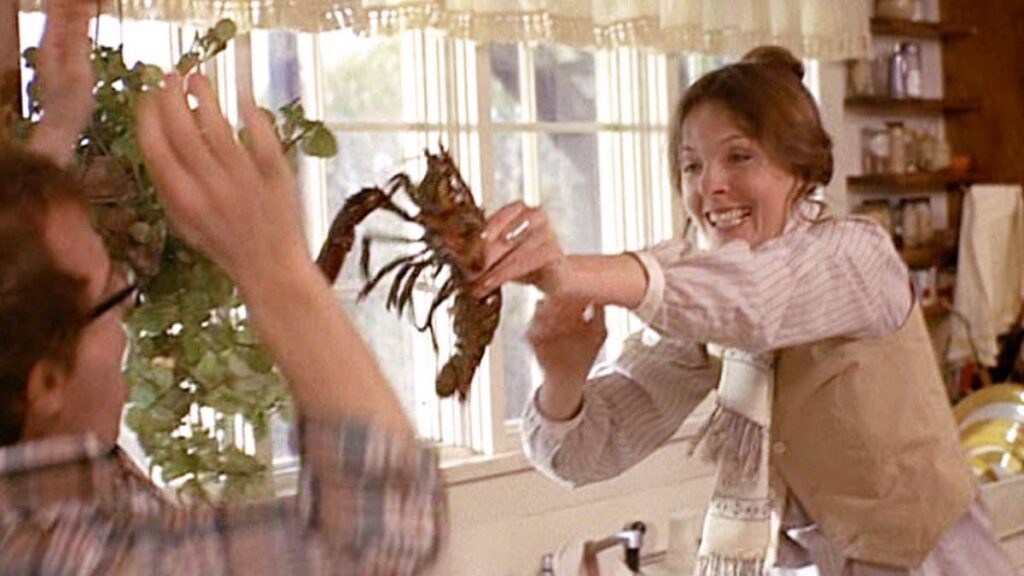
Cinema and gastronomy
Throughout the short but intense history of cinema, there have been repeated mentions of good – or bad – food, which, with the worldwide fever for the table that has been generated, have been captured in countless films over the last forty years.
Directors such as Martin Scorsese or Woody Allen have systematically brought together characters who ate and drank for a variety of reasons. The steak in Raging Bull (1980), the meatballs in Godfellas (1990) or the aesthetic display of Frenchified gourmet in The Age of Innocence (1993). The lobsters of Annie Hall (1977), the catering trays and recipes of Hannah and Her Sisters (1986), and the continuous gastronomic soirees of Husbands and Wives (1992). Others such as Aki Kaurimaski have captured in images a more abstract – or icy – concept of cooking. See the argumentation set out in Drifting Clouds (Aki Kaurismaki, 1996) or the visual appeal to the memory of Gabriel Axel in Babette’s Feast (1987). They are all examples of gastronomic ritual as a narrative element. Just like the psychedelic gazpacho in Women on the Verge of a Nervous Breakdown (Pedro Almodóvar, 1988) or the Christmas celebration in Plácido (Luis García Berlanga, 1961).
However, it is a fact that the culinary is enhanced on very few occasions. The mimetic between spectator and character, that instant in which one feels the textures, the aromas, the flavours, the perfume, the fusion, the feeling, the culinary experience -bref-, is as golden as it is scarce -or perhaps the former is a consequence of the latter-. It is not because the image is explicit that the desired emphasis is achieved.
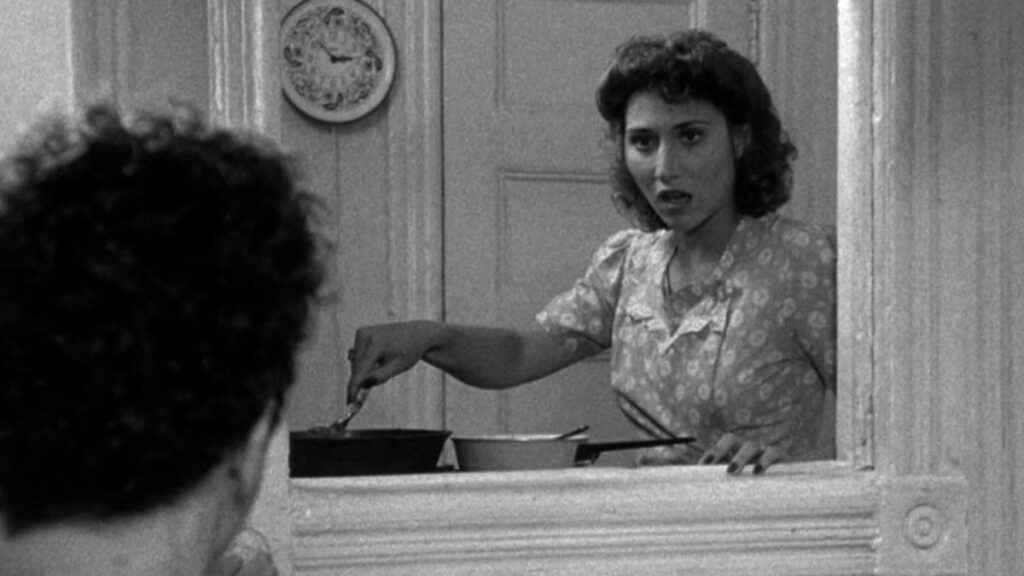
The atavistic banquet of Festen (Thomas Vinterbeg, 1998) is not the same as the Lutheran version of Fanny and Alexander (Ingmar Bergman, 1982) or the cargolada amb all-i-oli of Alcarràs (Carla Simón, 2022), nor is the repeated and painful lactation of Cinco lobitos (Alauda Ruiz de Azúa, 2022) is not the same as that of the young Pu Yi in The Last Emperor (Bernardo Bertolucci, 1987), nor is the fast-paced orchestration of Boil (Philip Barantini, 2021) and the gastro-despropósito of Playtime (Jacques Tati, 1967).
One might think that the pairing of gastronomy and cinema – understood as a mimetic experience for the spectator – should be appreciated in the cinematographies of countries more closely linked to fine dining, namely – and only as an example and not in this order: France, Italy and Spain. One should, it is logical to think so, apprehend the sweet or the savoury on the screen if that filmmaker -or producer or scriptwriter- were from one of these three countries (Mexico, Peru or Japan could also join the trio).
And yet this is not the case
It is not the passport but the dramatic palate – or talent or duty – of the creative when it comes to capturing a feeling or conveying an opinion through the screen and, consequently, attacking the psyche of the viewer and awakening the holistic feast of gastronomy.
For the spectator, the Big Kahuna in Pulp Fiction (Quentin Tarantino, 1994) or the Sacher cake in Inglourious Basterds (Quentin Tarantino, 2009) will not taste as good, if not better, than the cheeses that Jean Pierre Léaud shares with Delphine Seyrig in Stolen Kisses (François Truffaut, 1968), even though the former is from the state of Tennessee and the latter from Paris. Nor will the spectator find on the same level the quails with rose petals – one believes one reaches heaven with the mere viewing of Como agua para chocolate (Alfonso Arau, 1992) and the codfish cakes -argumental- of Roma (Alfonso Cuarón, 2018), and yet both are as chilangos as Enrique Olvera. The comparison becomes terrible when we talk about the gustatory delirium of Eat, Drink, Love (Ang Lee, 1994) or the bland cinematography – only from a gastronomic point of view, mind you – of Yasujiro Ozu. The Tokyo native was all about stories and sake, and he told them and drank it like no one else.
Food is ritual and flavours, it is aesthetics and ethics, it is products, method and trickery, it is spices, harmonies, set phrases and others yet to be conjugated. Cooking is a great whole, but always and above all, food is pure instinct. Only the filmmaker who has been able to perceive this element has managed to connect in the gastronomic experience with the spectator. Regardless of nationalities or insistence on shots that reflect ingredients and plating, only cinema that appeals to this primal instinct is the one that conveys the experience as a whole.
Eros and Thanatos
If we look at his Three Essays for a Sexual Theory (1905), Sigmund Freud linked the sexual awakening of the individual to what he called the oral phase or, in other words, the satisfaction of his libidinal drive through the mouth. That is the beginning, pleasure reconverted into survival and vice versa. Hunger and desire fused in the same act; or the scene in Io sono l’amore (Luca Guadagnino, 2009) in which Tilda Swinton passionately tastes the prawns served to her by the chef -and future lover- Edoardo Gabbriellini, and which will be the seed of a burning and sickly relationship. The strength of the gastronomic scene is not due to the product, nor to the non-existent recipe, nor to a description of the food, nor to the red tones on the plate, nor to the red dress, also red, of the American actress, but to the fact of associating food and sex.
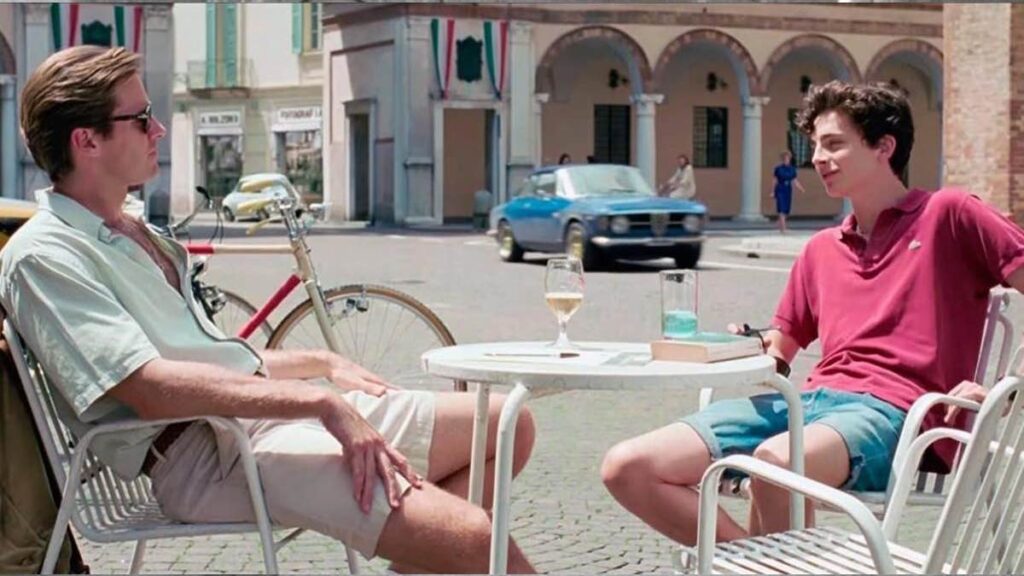
Fifteen years later, the Czech-born doctor published Beyond the Pleasure Principle (1920). In this text, Freud associated the pre-existing concepts of Eros and Thanatos. Both converged, according to him, composing two non-exclusive facets of the same fact. Although at first sight they are opposites, the sexual drive or the death drive are two interrelated dynamics and, therefore, there is no moment in which they appear disintegrated. Life and death are celebrated in the same time and place, as in Guadagnino’s earlier film, when sex gives way to tragedy, guilt and the verdict of the impossible, or as in A Bigger Splash (Luca Guadagnino, 2015), where Swinton – so fetishised in herself – eroticises herself by barely absorbing freshly made ricotta by farmers. The kitchen that precedes sex and darkness, just as it does in her most accurate feature, Call Me by Your Name (Luca Guadagnino, 2017), with Timothée Chalamet’s peach.
It is therefore no coincidence that Eros and Thanatos are repeated in the most famous works already mentioned or in others such as Furtivos (José Luis Borau, 1975), with its telluric and succulent hunting stews. In all of them, food acts as catharsis, it is the germ of desire and death. It is not in vain that it is the filmmakers attached to desire as a recurring object who have managed to exert the greatest impact on the spectator through cuisine. Luca Guadagnino is one example, but it was Alfred Hitchcock and Luis Buñuel who reached masterly heights with their great attachment to the baleful, the sexual and the influence of the oneiric -Freud, indeed-.
Hitchcock and Buñuel
The choreography of desire, death and dreams was the principle that governed the cinematography of both geniuses. Everything else was an accessory and, consequently, futile, a mere trifle, the amalgam of elements that helped to read their cinema. All except one, erected as a totem and a motto: food.
Gastronomy constituted the turning point in the narrative discourse of both, with Viridiana (Luis Buñuel, 1961) and the beggars’ supper that becomes a bacchanal and the photo shot by Lola Gaos; or Tristana (Luis Buñuel, 1970) and the migas and chickpeas and Deneuve’s leg. Even Rope (Alfred Hitchcock, 1948) and the chickens and the banquet and the brainy professor; or Rear Window (Alfred Hitchcock, 1954) and its lobster Thermidor and James Stewart with Grace Kelly -so volatile and sensual-; or the ingestion of food as an impulse to the murderer and a small Bordeaux recipe book that will serve as an obstacle to the inspector in Frenzy (Alfred Hitchcock, 1972).
Nobody breastfed his characters like Luis Buñuel (Los olvidados, 1950; Ensayo de un crimen, 1955), no one led them in the same way towards a feast, then an orgy, (El ángel exterminador, 1962), nor engaged in carnal conversation with his maids over a plate of scrambled eggs with truffles (Ese oscuro objeto del deseo, 1977), nor did he dictate Freudian continuity between the first two phases of desire (El fantasma de la libertad, 1974), forge the relationships between Rey and the others around one – or many – tables, (El discreto encanto de la burguesía, 1972) or anoint the characters with theological wisdom through food (La vía láctea, 1969).
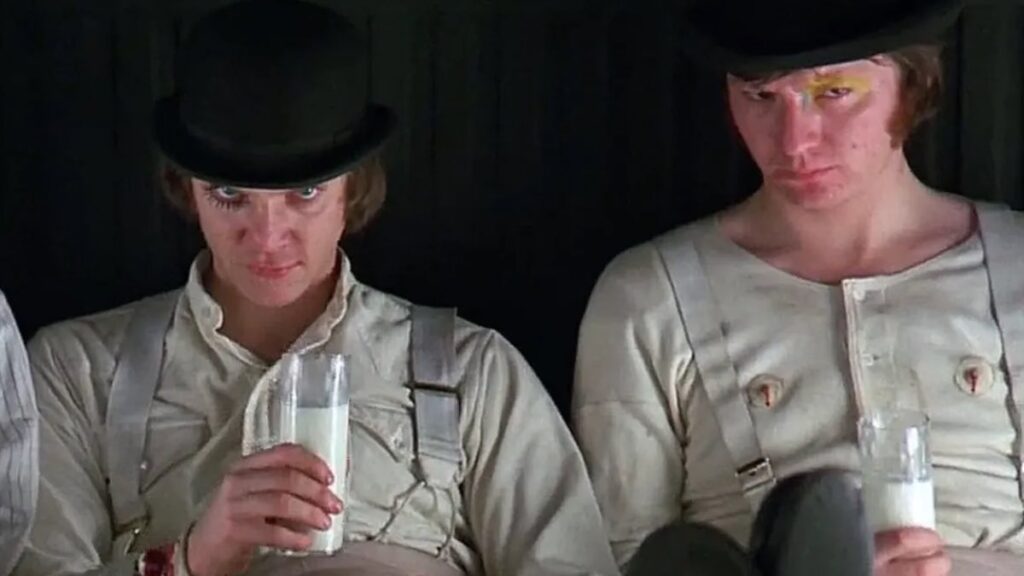
English concentrated on eggs, chicken and milk. Eggs as the antithesis of eros. And that’s why he made his characters put out cigarettes in the yolks (To Catch a Thief, 1955). However, Alfred Hitchcock conceived love as a thigh. Calcined in Chained (1948), turgid in To Catch a Thief and Rope, or as the last – and surprising – unspoken wish of the late Irving Patrick in The Paradine Trial (1947). Like the man from Calanda, he also focused on lactation as a twilight symbol (Sospecha, 1941), a precedent, together with Buñuel’s Archibaldo, of anti-heroes linked to milk, such as Alex in A Clockwork Orange (Stanley Kubrick, 1971); milk always in a glass, please.
Neither Alfred Hitchcock (a Mimosa aficionado), nor Buñuel (proto-crack of the Dry Martini) stood out as marmite or gourmets, but the conjugation of sex, death and sleep was fundamental for the gastronomic event on screen to transmit the truth that is only transmitted with the eternal.
In a random dialogue à table in Él (Luis Buñuel, 1953), a diner asks the priest: “And what do you think about love? The priest replies: “My opinion about love is that this turkey is very good”.
And it is undeniable, the kitchen was immutable for them.

